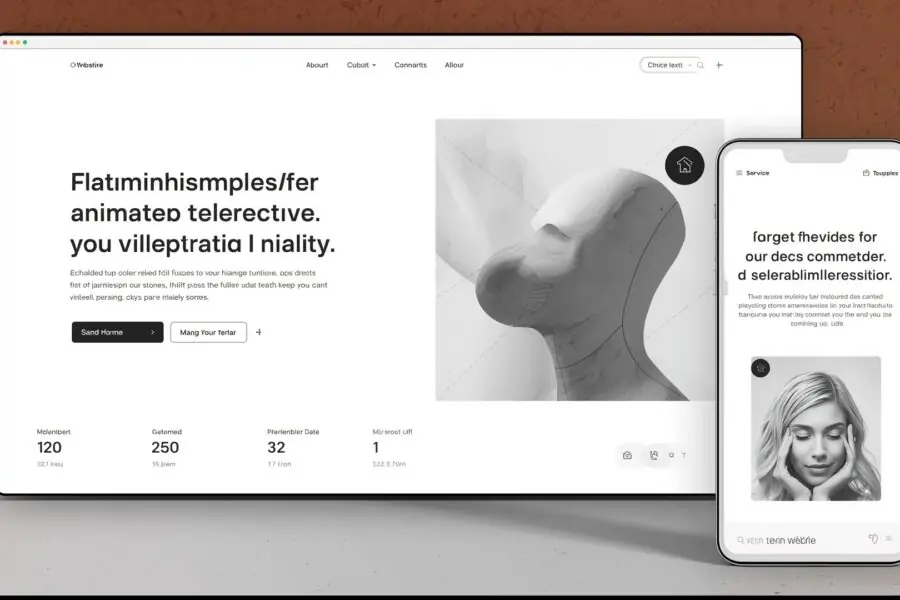
Your homepage is your digital front door. It’s the first interaction most people will have with your brand—and in a matter of seconds, it needs to capture their attention, communicate your value, and guide them toward action. In 2025, attention spans are shorter, competition is greater, and user expectations are higher than ever.
An effective homepage doesn’t just look good—it performs. It anticipates visitor needs, answers key questions, and supports your broader marketing and sales goals. Below is a breakdown of what makes a homepage truly great this year.
Clear Value Proposition
The most important element of your homepage is a clear and compelling value proposition. This is the headline and subheadline that explain, in simple terms, who you are, what you offer, and why it matters. It should be visible above the fold and instantly understandable to someone who has never heard of your business before.
Example: “Custom Landscaping Services for Chicago Homes” — followed by “Reliable, eco-friendly lawn care designed to make your yard stand out.”
Strong Visual Hierarchy
Design isn’t just about aesthetics—it’s about communication. A strong visual hierarchy ensures that your homepage content is easy to scan. Headlines should be larger and bolder than subtext. Calls to action (CTAs) should be visually distinct. Use whitespace strategically to break content into digestible sections.
Icons, bullets, and section blocks help direct the eye and prioritize key content. Remember: users won’t read everything, so guide them to what matters.
Mobile-First Optimization
With mobile traffic now exceeding 60%, your homepage must be built for small screens first. That means large, tappable buttons; clean typography; and lightning-fast load times. Google uses mobile-first indexing, so a poor mobile experience will also hurt your SEO rankings.
Use responsive frameworks, compress images, and test frequently across different devices to ensure a seamless experience.
Trust Signals and Social Proof
Users are skeptical. A homepage without trust signals will lose visitors, even if the design is beautiful. Testimonials, client logos, media mentions, and star ratings all help build confidence. Include real faces, video testimonials if possible, and third-party badges (like BBB, Yelp, Google Reviews).
Make trust-building part of your homepage strategy, not an afterthought.
Clear and Actionable CTAs
A homepage must lead somewhere. What do you want visitors to do? Call you? Request a quote? Book a service? Download a brochure? Place these calls to action prominently and repeat them in logical places throughout the page.
Avoid generic buttons like “Learn More.” Instead, use value-driven CTAs like “Get My Free Estimate” or “Schedule Your Free Demo.”
Simple and Intuitive Navigation
Overwhelming menus and dropdowns can kill conversions. Stick to the essentials. Your homepage should make it easy for users to find key pages: Services, About, Contact, Pricing, and Portfolio. Consider using sticky headers so navigation stays accessible as users scroll.
A good rule of thumb: users should never need more than three clicks to reach any major part of your site.
Professional Visuals and Consistent Branding
Stock photos can work—but only if they’re high quality and relevant. Ideally, your homepage should feature custom imagery that reflects your actual business. Brand consistency matters too: colors, fonts, and tone of voice should all align with your identity.
Use short videos or animation carefully—they can enhance engagement but also slow down your page if not optimized.
SEO and Performance Foundation
Your homepage should be built with SEO in mind. Use an H1 for your main title, structure the rest of the page with H2s and H3s, and write concise meta titles and descriptions. Integrate relevant keywords naturally.
Fast loading speed, clean code, alt text for images, and proper internal linking are all essential to both user experience and Google rankings.
Ongoing Testing and Optimization
The work doesn’t end after launch. Use tools like Google Analytics, Hotjar, and A/B testing platforms to analyze how users interact with your homepage. Monitor bounce rates, CTA clicks, and conversion funnels to identify areas for improvement.
Great homepages are always evolving—driven by data, feedback, and changes in your audience’s needs.
Final Thoughts
Your homepage is not just a welcome mat—it’s a strategic marketing tool. When crafted thoughtfully, it can generate leads, build trust, and convert casual visitors into loyal customers. Focus on clarity, simplicity, speed, and relevance, and your homepage will serve your business for years to come.
Growing Online
